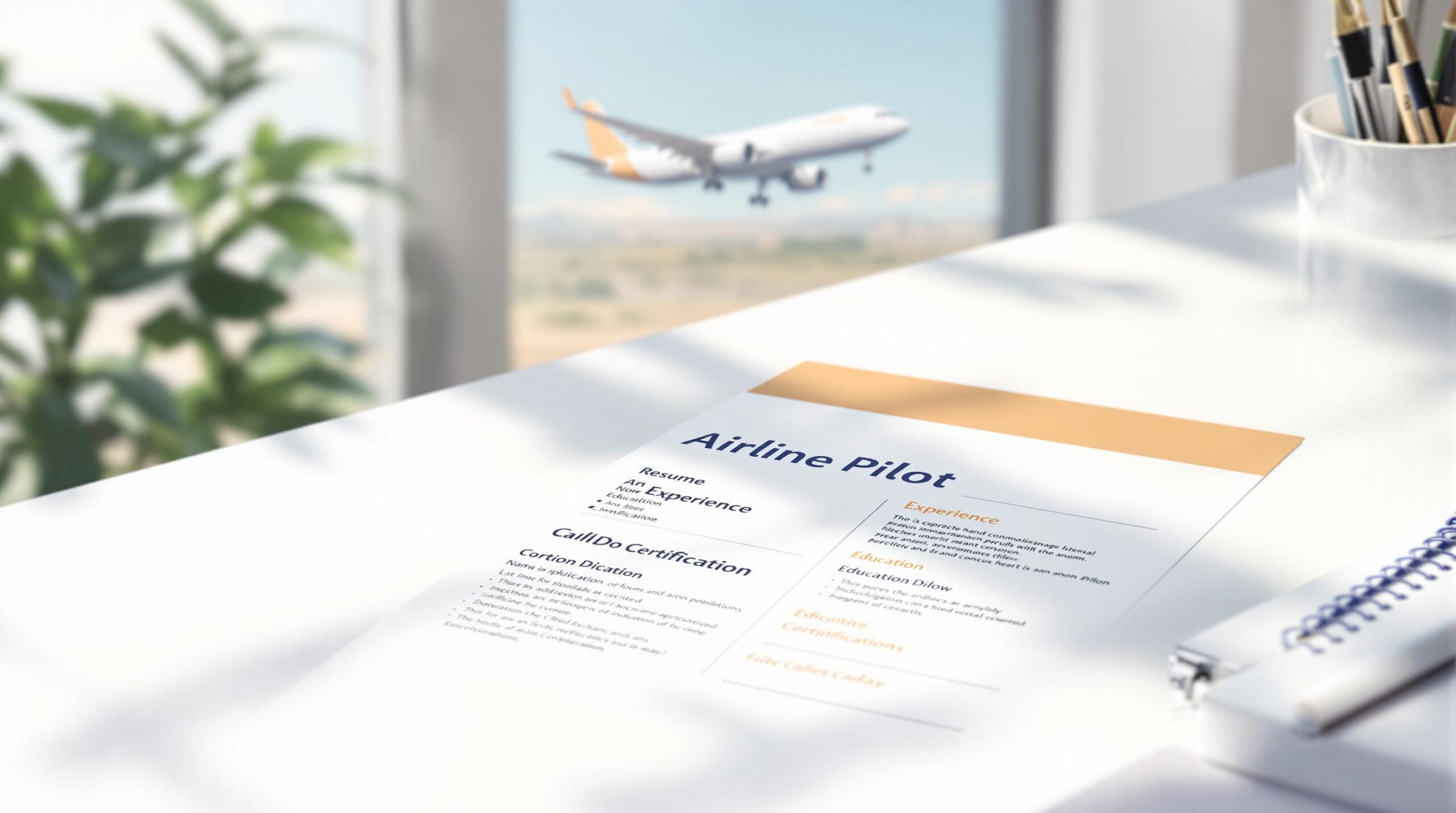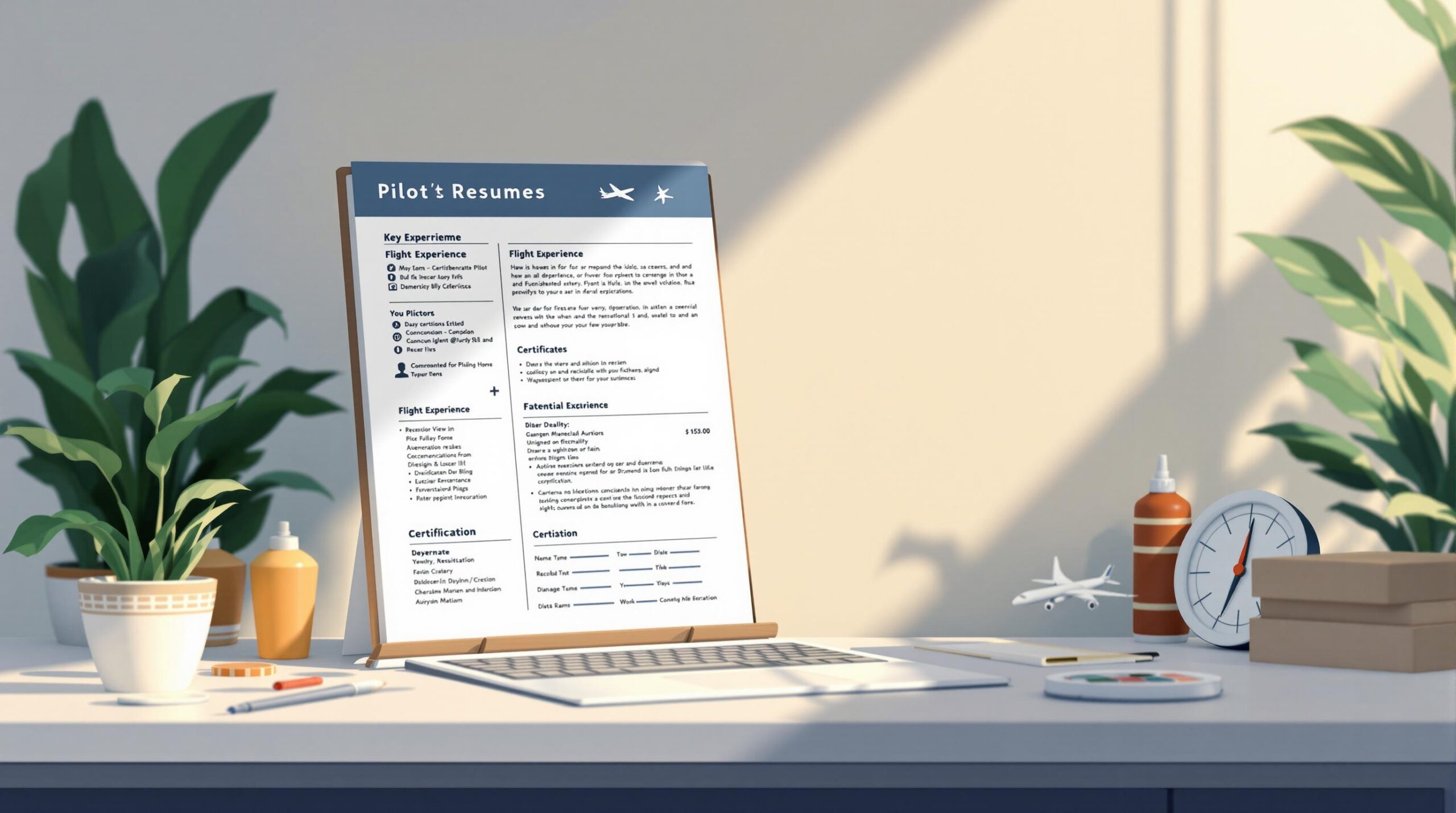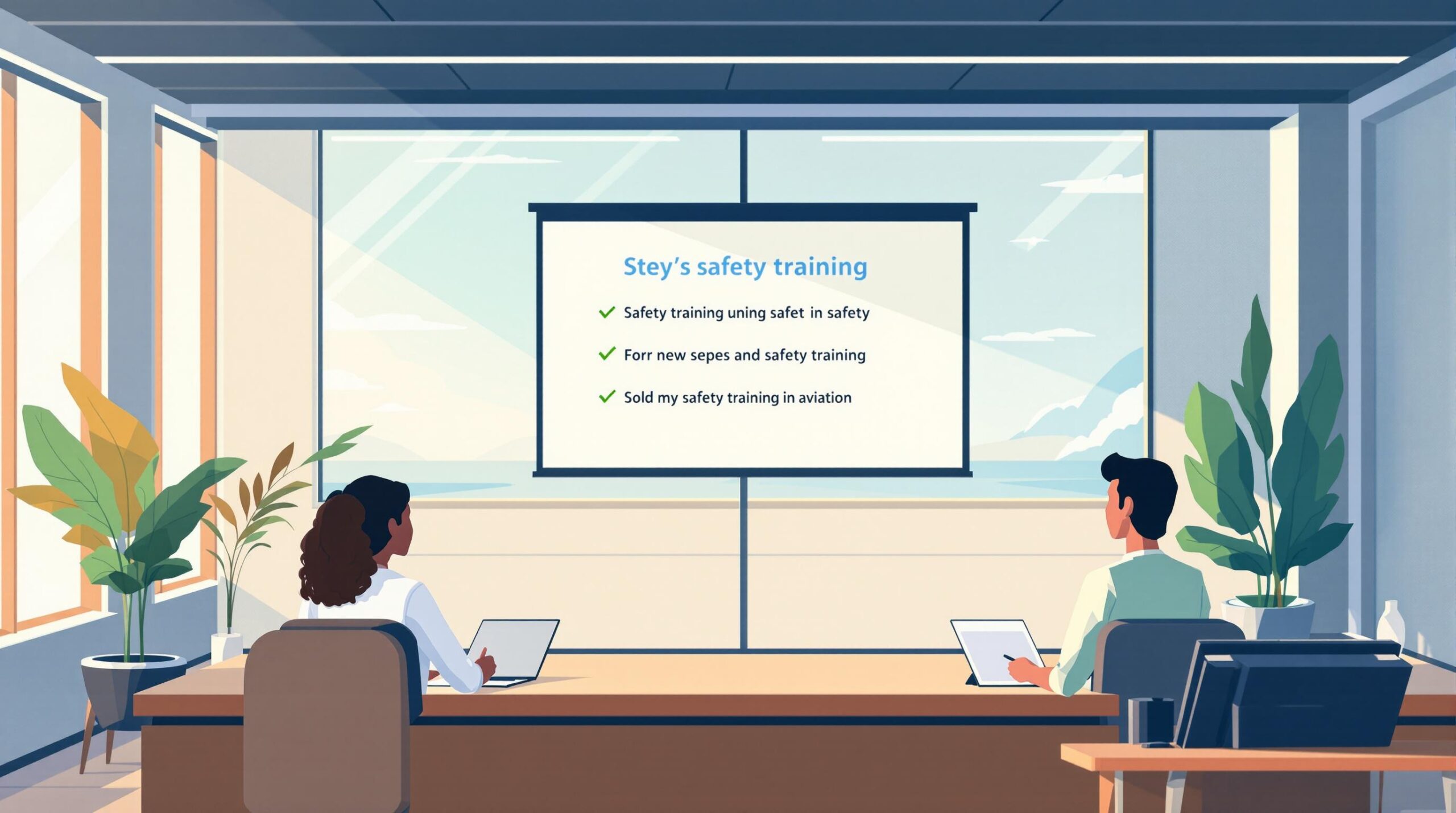Crafting a strong pilot resume is essential to landing an interview. However, many skilled pilots make avoidable mistakes that hurt their chances. Here’s what you need to know:
- Use a clean layout: Easy-to-read sections and consistent formatting are key.
- Avoid irrelevant details: Focus only on aviation-related experience and certifications.
- Be accurate with flight hours: Break them down into categories like PIC and instrument time.
- Customize for each airline: Tailor your resume to match the airline’s specific needs.
- Make it ATS-friendly: Avoid tables, graphics, and unusual fonts to pass automated systems.
Pro Tip: Tools like Pilot Pathfinder can help optimize your resume for ATS and streamline applications. A polished, tailored resume can open doors in this competitive field.
5 Resume Mistakes Pilots Should Avoid
Poor Layout and Organization
Keep your resume simple and easy to read. Use clear section headers, consistent fonts, and plenty of white space so recruiters can quickly scan it.
Including Irrelevant Information
Stick to aviation-related experience and certifications. Adding unrelated jobs or excessive personal details can distract from your qualifications and weaken your focus.
Mistakes in Flight Hour Records
Make sure your flight hours are accurate and up to date. Break them down by categories like PIC, instrument, and multi-engine. Don’t forget to include details about special operations or type ratings. Regularly updating your logbook can help you avoid errors.
Using a Generic Resume for All Applications
Every airline has its own requirements and values. Customize your resume for each application by aligning it with the airline’s specific needs. Research shows resumes tailored to job postings – by including relevant keywords – perform better with both recruiters and automated systems [1].
Formatting That Doesn’t Work with ATS
Many airlines use Applicant Tracking Systems (ATS) to screen resumes before a recruiter even sees them. Avoid tables, graphics, unusual fonts, or incompatible file formats to ensure your resume passes through ATS smoothly. Tools like Pilot Pathfinder can help you format your resume for both ATS systems and human reviewers while keeping it professional.
Making Your Pilot Resume Better
Clean Format and Layout Tips
Stick to a reverse-chronological format to showcase your most recent experience first. Organize your resume into clear sections: contact information, professional summary, certifications, flight experience, and education. Use bold text strategically and leave enough white space to make your resume easy to read and visually appealing.
Once the layout is polished, focus on highlighting the skills and experience that make you stand out as a pilot.
Highlighting Key Aviation Skills
Emphasize your aviation skills by showcasing measurable achievements and specific qualifications. Break down your flight hours into categories such as total time, PIC (Pilot in Command), instrument, cross-country, and night flying. Include details about hours flown by aircraft type and operation.
List your certifications and ratings in order of relevance to the job you’re applying for. This could include type ratings, instrument ratings, and any special authorizations. Make sure to update this section regularly as you earn new qualifications.
"The essentials of a professionally written pilot resume are not about merely listing accomplishments and certifications; they provide insight into the pilot’s professionalism, reliability, dedication to safe aircraft operation, and commitment to quality work in aviation." – MyResumeStar Team
Using Pilot Pathfinder for Applications

If you’re finding it challenging to navigate ATS requirements or keep accurate flight records, Pilot Pathfinder can help. This platform is designed specifically for aviation professionals, offering ATS-friendly, aviation-focused resumes that align with airline standards.
The Pro plan includes tools to automate logbook data integration and keep track of certification records. Military pilots can take advantage of the military conversion feature, which translates their service experience into civilian terms. Plus, the browser plug-in simplifies the process of applying to multiple airlines, ensuring consistency across all applications.
Steps to Strengthen Your Application
Keep Your Resume Current
Make it a habit to update your resume regularly with new flight hours, certifications, and training. A quick review every few months ensures your qualifications are presented accurately and professionally. Airlines appreciate candidates who pay attention to detail.
"Writing a professional resume is important but it doesn’t have to be stressful." – CareerCloud
Once your resume is up to date, shift your focus to preparing for the next big step: the interview.
Interview Preparation Tools
A strong resume gets your foot in the door, but nailing the interview is what sets you apart. Pilot Pathfinder’s Pro plan offers tools tailored for airline candidates to help you stand out, including:
- Technical Assessment Tools: Practice aviation-related questions to boost your confidence.
- Behavioral Interview Practice: Get ready for competency-based questions and refine your responses.
- Airline-Specific Resources: Dive into company culture and requirements to show genuine interest.
Here are some key areas to focus on during your preparation:
- Document Organization: Keep your logbooks, licenses, and certificates organized and easy to access.
- Research: Learn about the airline’s history, fleet, and recent updates. Industry experts note that 85% of recruiters favor candidates who show a deep understanding of the company.
sbb-itb-de05b1b
5 Things You Don’t Want To Get Wrong On Your Pilot Resume
Summary
Crafting a standout airline pilot resume takes precision and a thoughtful approach. In the competitive aviation world, your resume is often the first impression you make on potential employers.
Here are key areas to focus on to avoid common mistakes:
- Layout and Organization: Use a clean, professional design with clear section headers. This makes it easier for recruiters to quickly scan your resume.
- Content Accuracy: Double-check your flight hours and ensure your logbook is current. Accuracy here is non-negotiable.
- Tailored Applications: Adjust your resume to match the specific requirements of each airline. This increases your chances of landing an interview.
"A strong pilot resume can help you secure interviews, negotiate better salaries, and open doors to new career opportunities." – Garg Aviation
- Technical Optimization: Make sure your resume is ATS-friendly by using standard headers, aviation-specific keywords, and simple formatting.
To simplify the process, tools like Pilot Pathfinder’s resume builder can save time. Their Pro plan even offers features to help with airline-specific interview prep and tailored applications.
"A winning pilot resume should highlight the candidate’s outstanding flying skills and flight experience." – Resume.io
Your resume isn’t just a list of qualifications – it’s a way to showcase your expertise in aviation. With commercial pilot demand expected to grow by 4% between 2022 and 2032, having a polished, professional resume will be key to standing out in this growing field.
FAQs
How to make a pilot resume stand out?
To make your pilot resume catch attention, focus on a few key areas:
Highlight Your Aircraft Experience: Clearly list the aircraft types you’ve flown, total flight hours, and key metrics like PIC (Pilot in Command) or instrument time. This gives recruiters a quick snapshot of your qualifications. Don’t forget to mention any specialized certifications that set you apart, such as international operations or advanced weather training.
Include Specialized Training: Stand out by showcasing unique certifications or experiences, such as:
- Mountain flying certification
- International operations
- Advanced weather training
- Special use airspace operations
Optimize with Technology: Use tools like Pilot Pathfinder to format your resume for ATS (Applicant Tracking Systems). These tools help ensure your qualifications are easy to spot and properly formatted.




